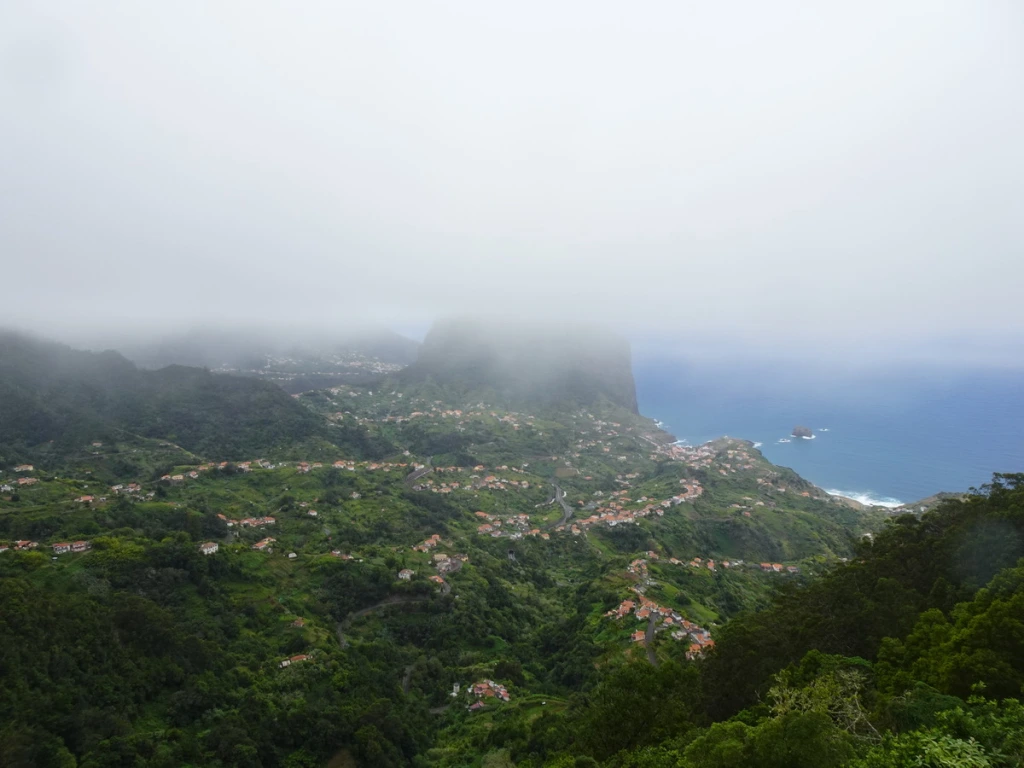While the UK went to the polls (thank goodness for postal votes), we headed off on another hike. Buses to Ribeiro Frio aren’t all that frequent, so we left the hotel at 07.50 to give us plenty of time to get to the bus stop. While we waited, a friendly Madeiran man told us which bus to look out for (in Madeira, different operators have different coloured buses, and some are single-decker buses whereas others are more like a coach) and gave us some tips for our time on the island.
As with our previous hike at Ponta de São Lourenço, we weren’t the only hikers making use of the affordable bus network. Many twisty mountain roads later, we were deposited in Ribeiro Frio. There’s a trout farm and a couple of restaurants, but the main draw for us was the hiking trails.
We started with Vereda dos Balcões: a little out-and-back trail to one of the most scenic viewpoints on the island. This struck me as a particularly accessible route, and this was reflected in the different groups of people we encountered on it. I guess it helps that it’s only 3km return, and it’s reassuringly flat.
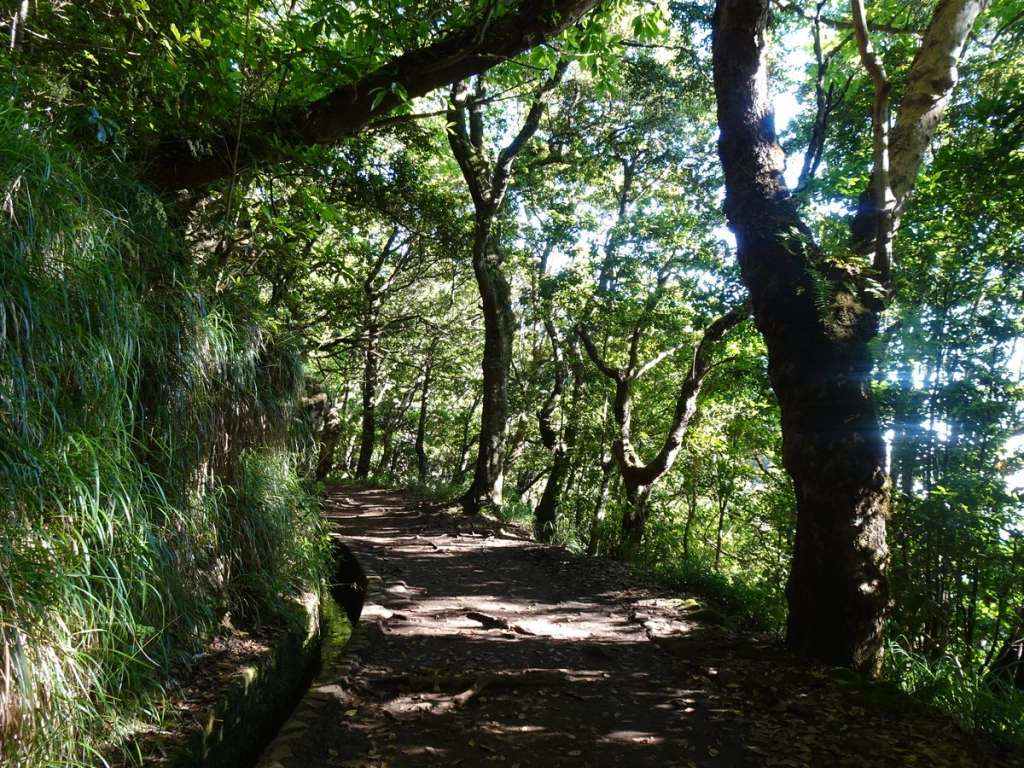
Vereda dos Balcões follows Levada da Serra do Faial through the Laurisilva of Madeira, a UNESCO World Heritage Site since 1999. It’s the largest surviving area of laurel forest (or laurisilva) in the world. This biodiverse landscape was once widespread in Europe, but is now only found in Madeira, the Azores and the Canary Islands.
Before long, the path emerged at the Balcões viewpoint. I was (for once!) lost for words. From the viewpoint, there were beautiful views over the green valley of Ribeira da Metade and towards the island’s highest peaks: Pico do Arieiro, Pico das Torres and Pico Ruivo.
This was very much a ‘minimum effort, maximum reward’ type of hike (I’ve got another one of these coming up soon, so if you prefer this sort of hike, stay tuned). We took lots of photos, and eventually followed the path back to Ribeiro Frio.
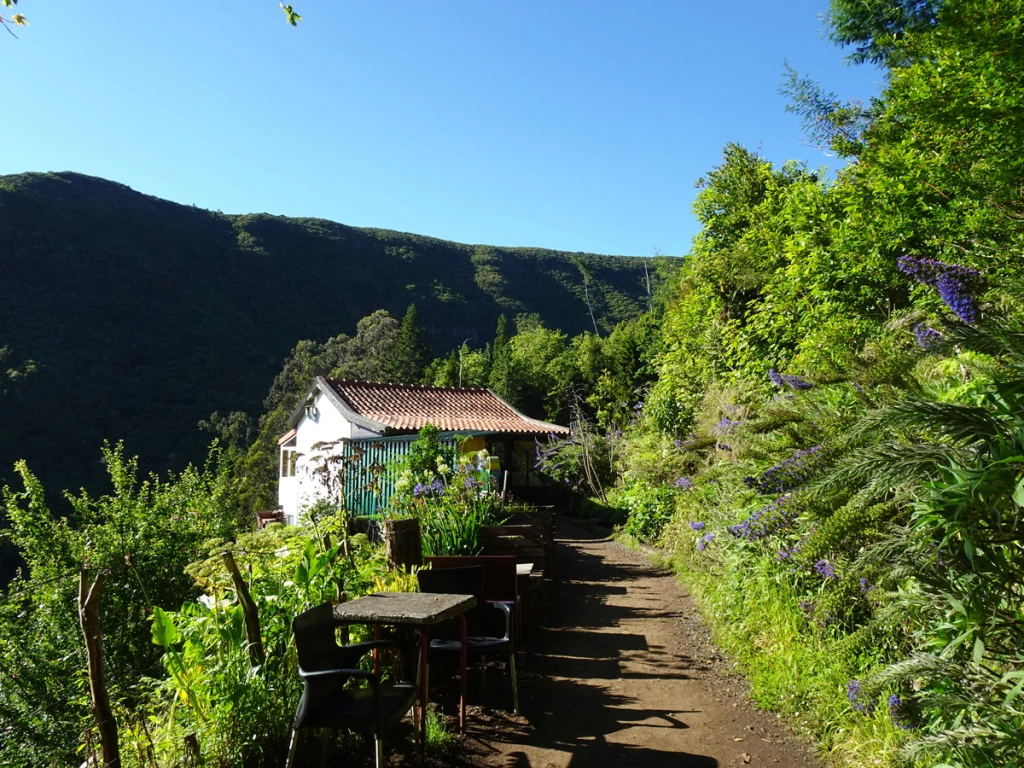
When we reached the main road, we simply crossed it to pick up the PR10 Levada do Furado to Portela. There is, for the majority of the route, a reasonably wide path alongside the levada, and where it narrows there is fencing between you and the drop off to your left.
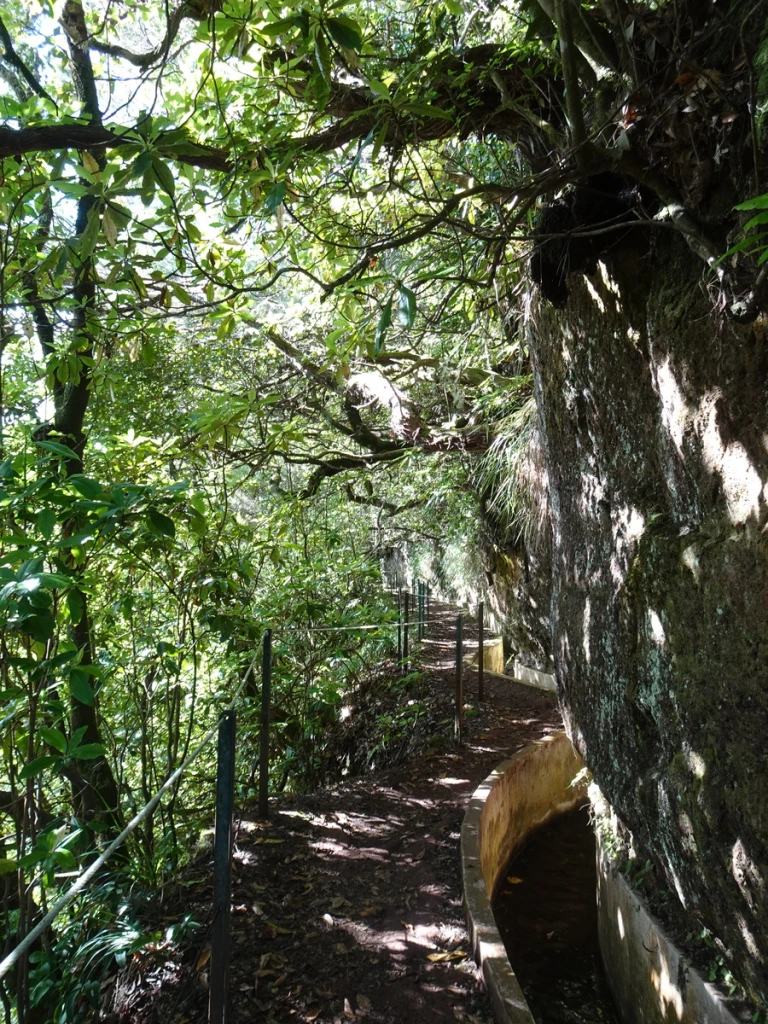
We didn’t run into many other hikers on the PR10. Some were just walking a short distance and then returning to their car in Ribeiro Frio; others had planned to walk the whole way, but turned back as they weren’t sure what to expect from the alternative route in place further along the trail.
According to our guidebook, there are some stellar views across the valley along this trail. Luck was not on our side, though, as the clouds had descended. Although it was very atmospheric, it did mean expansive views were not on the cards.
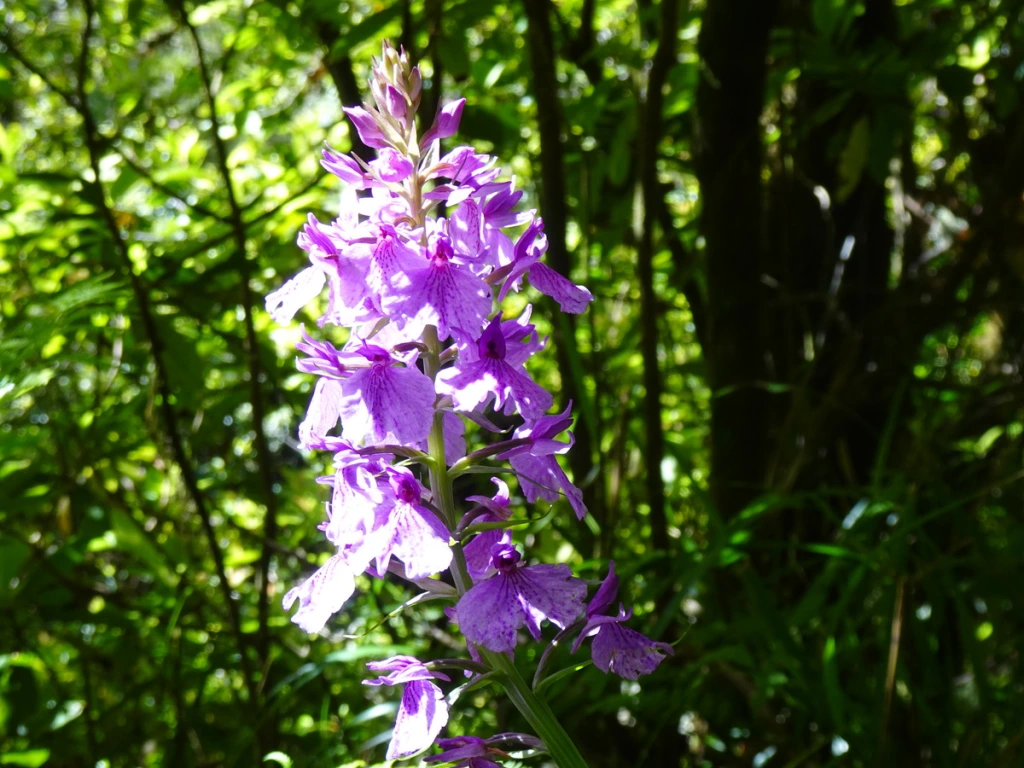
We spotted some pretty purple flowers growing by the trail. Google tells me these are in fact known as the Madeira orchid, and are endemic to the island.
Further on, the levada clings to the rockface while steps lead down to a small pool. We ended up having our picnic lunch here, as it was so peaceful and there were plenty of spaces to sit without obstructing the route.
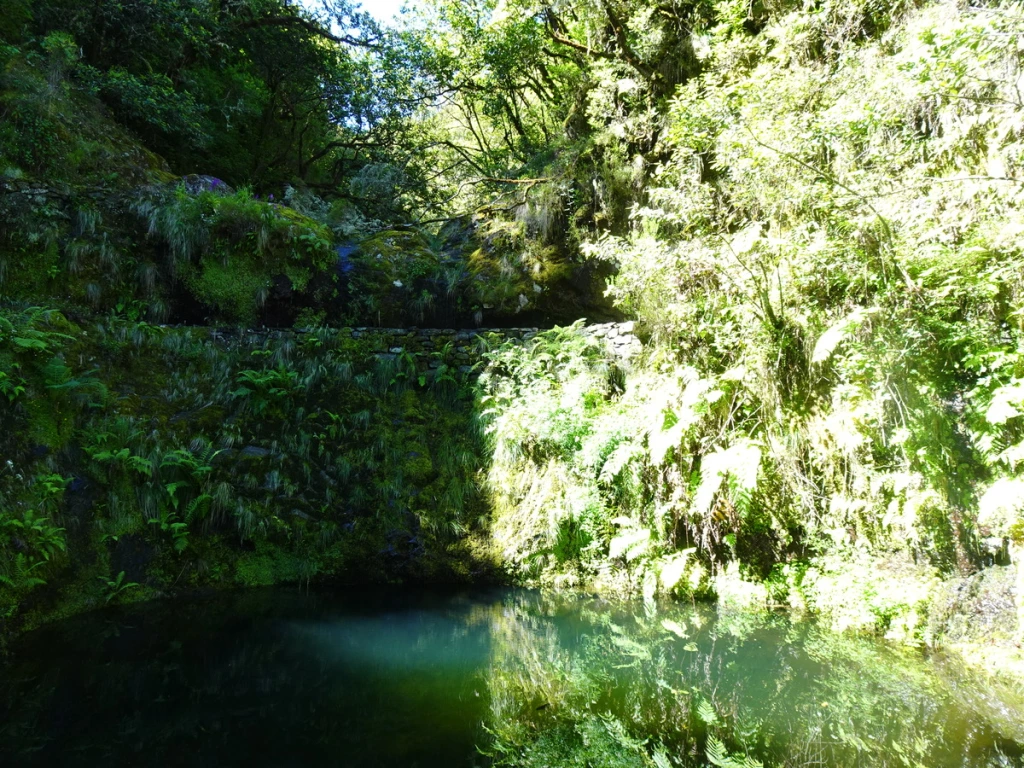
Bolo do caco and assorted other snacks devoured, we picked the path up again. The clouds lifted a little, enabling us a brief glimpse of the hillside across the valley
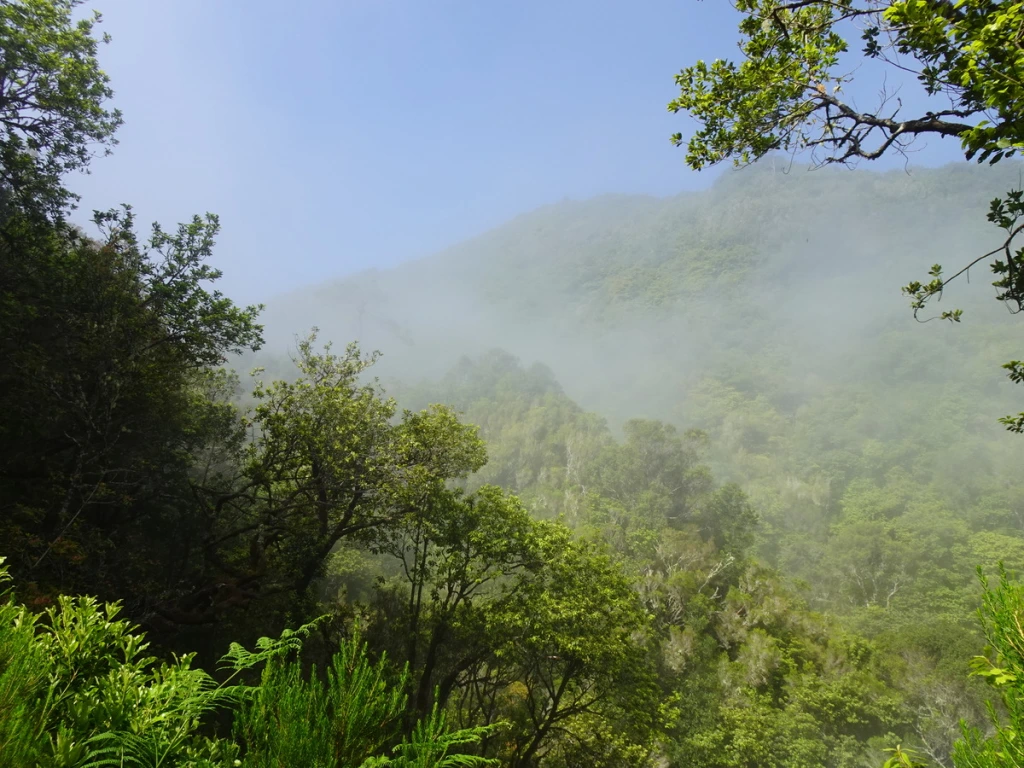
If narrow paths with no fencing à la Levada dos Tornos aren’t your thing, fear not: the PR10 consistently had fencing on the narrowest sections. Fortunately, we didn’t come across others going in the opposite direction on this stretch, as this was very much a one-person-wide path.
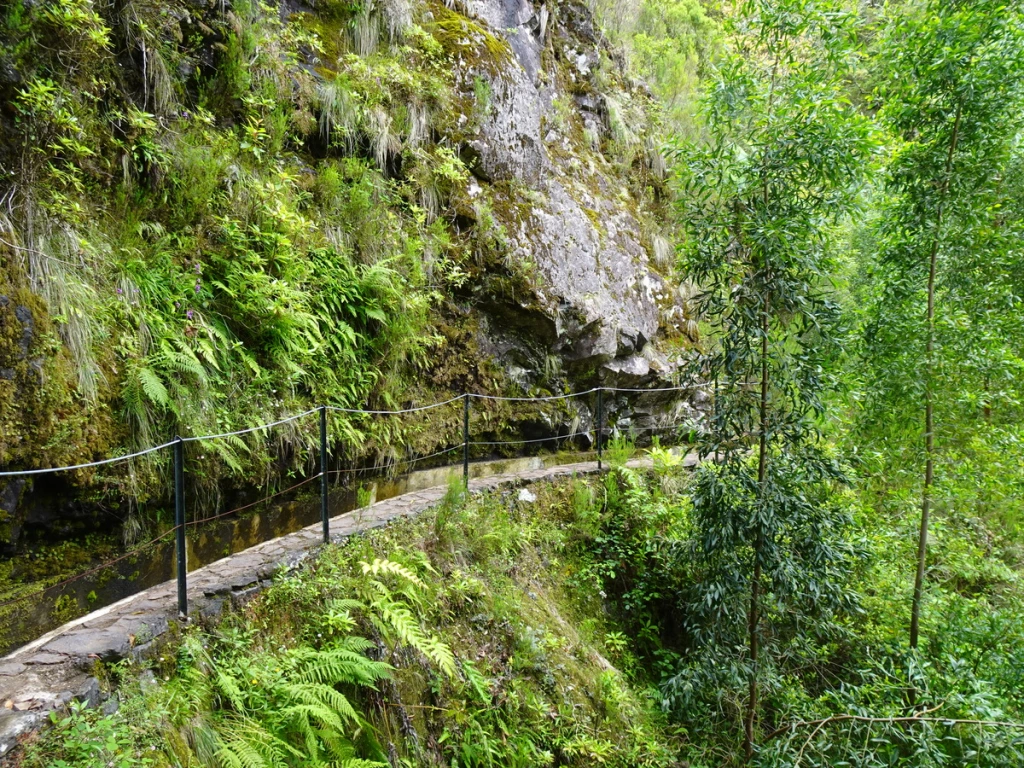
We knew before setting out that there was a detour in place via Pico do Suna. Visit Madeira’s website indicates this is still the case. Some other hikers we bumped into explained that is was due to rockfall in the tunnels further along the path, so whatever you do – don’t ignore the detour!
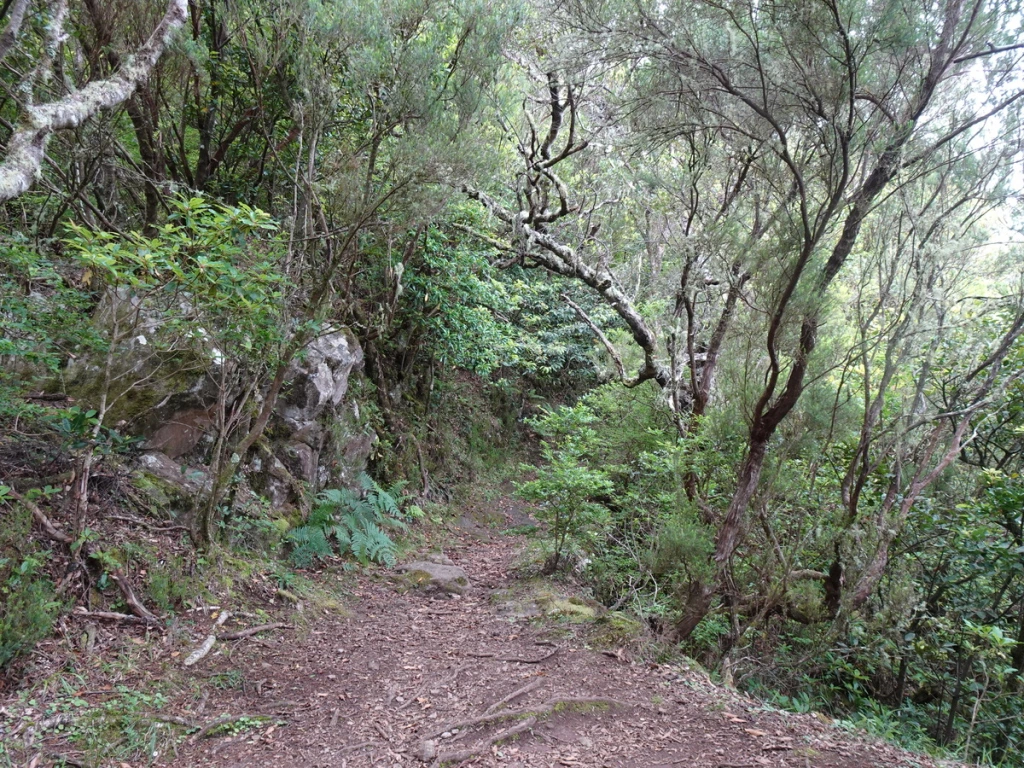
Visit Madeira suggests this alternative route adds 1.1km to the original route, and an ascent of 1,000m. This seemed like an awful lot of elevation gain, but given the alternative was to return to Ribeiro Frio and wait the best part of five hours for the next bus… you can guess which option we chose.
The good news is that it was nowhere near that amount of elevation gain. Heaven only knows how they calculated that, but since our watches estimated the total elevation gain of the whole route at 316m I can say with some confidence that they were miles off the mark.
Pico do Suna is – for a hiker who likes views, at any rate – an underwhelming summit, as it’s encircled by trees. We retraced our footsteps to rejoin the path. It was slipperier than we had anticipated in places, and even in my hiking boots I resorted to crouching and shuffling along some sections, so footwear with a decent amount of grip is a must.
Before long, the alternative route rejoined the original path. There is a little picnic area at Posto Florestal Lamacieros, complete with lots of birds flitting about.
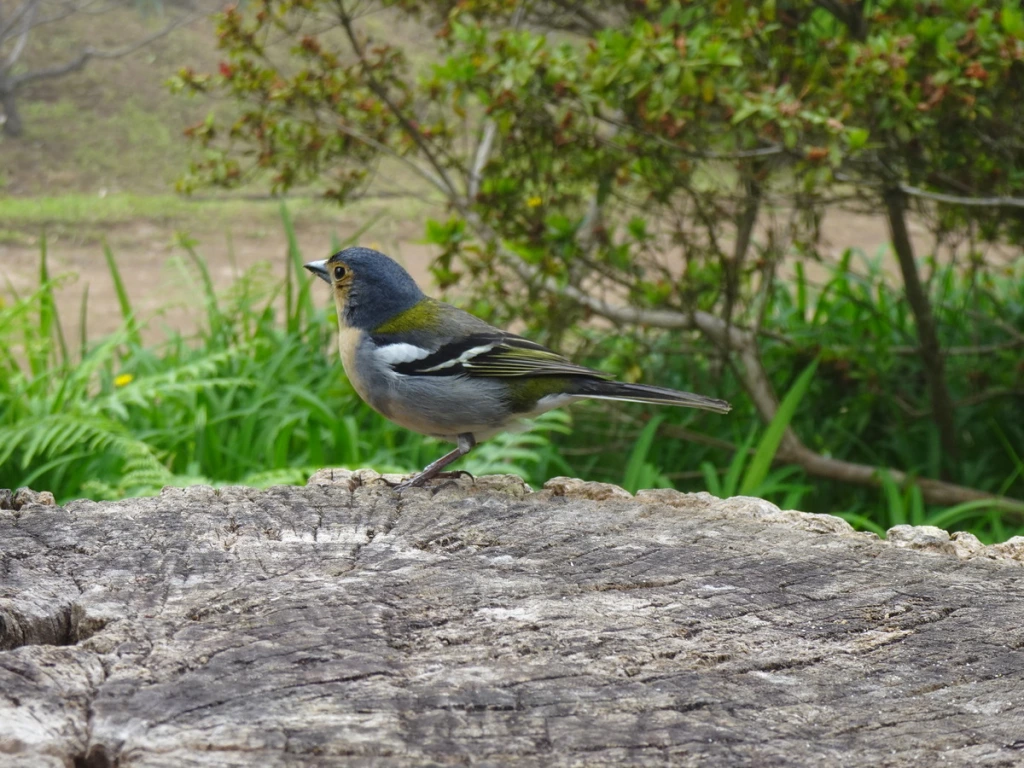
The last few kilometres of the PR10 were a fairly steady downhill alongside the Levada da Portela, and before too long we reached the little hamlet of Portela.
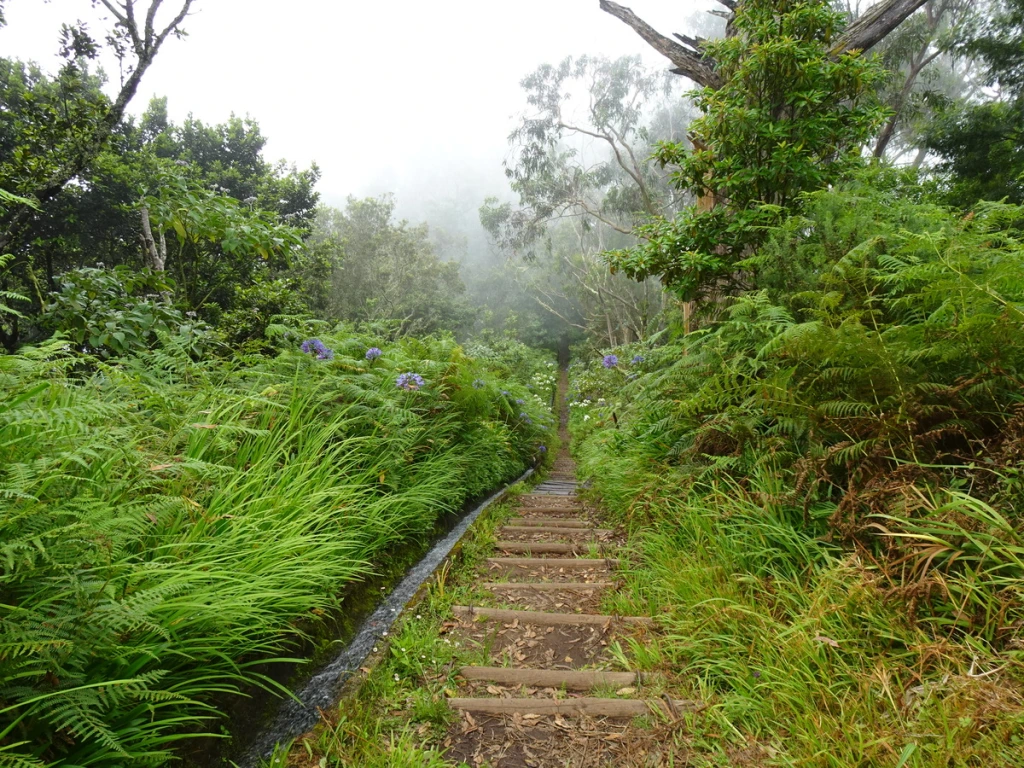
We stopped for a drink (and a prego for Laurence) at Bar Restaurante Portela à Vista at the end of our hike before returning to Funchal.
